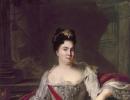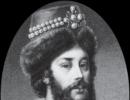Photoshop lesson. Skin retouching with Patch tool and Clone stamp. How to Fix Skin Blemishes with the Patch Tool in Photoshop Where is the Patch Tool in Photoshop?
In this case, people who are at least a little familiar with working in Adobe Photoshop know that the same task in this program can be solved in different ways. Therefore, many articles have been written on the Internet and in books that describe in detail the methods of retouching human skin in portrait photography. As you know, there is no person on Earth who would have perfect skin. Though there are some problems, but there are. And every photographer strives to present his client in the best possible light.
That is why experts strive in their experiments to find a balance between how to remove these defects and at the same time preserve the realism of the natural texture of the skin. Undoubtedly, the best choice would be to invite a professional makeup artist who will prepare the model or client so that the skin looks flawless, but at the same time retains its realism.
But not all people are willing to pay for expensive makeup artist services for the sake of one photo. Yes, and this is required only in exceptional cases - in commercial photography. We want our clients to look like themselves and be a little more beautiful than in real life.
In order to remove small spots on the face, many photographers fanatically use the Spot Healing Brush tool. Personally, I never resort to using it. In this situation, I prefer to use the patch tool.

Yes, I like this tool just because it allows you to sample the required pixels and place them on the defective part of the photo. And if the result is not entirely satisfactory, then you can always adjust the result to suit your needs. Let's start.
Step 1. Opening the Image
Looking at the photo, you can see that the girl is quite beautiful, but there are a few spots on the skin of the face, which we will try to get rid of.
Step 2. Select the area and apply the "Patch"
In order to start working with the image, let's create a duplicate of the layer (press Ctrl or Command + J). You can also add a layer mask so that later you can undo any changes made.

Select the Patch tool from the panel. Make sure the Source is selected in the tool settings. Now carefully select the area around the spot and drag the selected area to the area of the photo with a similar color and tone. It doesn't have to be near the selection, you can sample from anywhere, even the neck, shoulder, anywhere on the body where the skin looks more perfect.
Step 3: Repeat and correct if necessary
Repeat the above process for all skin areas where there are small imperfections. Just keep selecting the desired area and replacing it with better pixel samples. If after replacing the result did not give a positive effect or something does not suit you, then you can simply cancel the action by pressing the Ctrl or Command + Z keys.
Step 4. Remove dark circles under the eyes
Very often in portrait photography you can find bags or dark circles under the eyes. Our vision can exclude such defects, but the camera sees everything. And we, as photographers, want our clients to look much brighter and more beautiful.

To remove bruises or bags under the eyes, you must also use the Patch tool to select the desired area under the eyes, trying not to touch the eyelashes and drag the selected area of the image to a more ideal color and tone. It may happen that the result you get will upset you. Do not worry, without removing the selection, go to the menu Edit and select Fade Patch. P the tool window will appear. Move the slider to the left until you get a harmonious result that suits you.
Step 5 Merge Layers
After you have completed all the operations, and the result suits you, you need to merge all the layers for subsequent correction or saving the photo. You can also go to the history panel and take a snapshot of an image. If you're going to retouch your image further and something goes wrong, you can always go back in between.
Step 6. How to highlight the eyes
If desired, you can always give the eyes of the model or client more expressiveness. To do this, duplicate the layer again. Select the Dodge Tool (Clarifier), make sure that the exposure is set at 20-30% in the settings. Take a large brush that covers the eye and eyebrow in diameter, and in one motion with the mouse, draw over the eye and eyebrow. If the result does not suit you much, then you can adjust the opacity of the layer or apply a layer mask and hide the necessary details.

The Patch tool is perhaps one of the easiest and fastest ways to tidy up leather and saves appearance your client. And you no longer have to learn complex retouching techniques that take much more time to correct the image.
P.S. As usual, we checked all the published material on our own experience. The next picture was taken on December 14, that is, the day before the publication of this article. Here's how we managed to fix the defects on the girl's skin. I think everything turned out great within the framework of this material.

Photo before processing

Photo after processing
Tool patch tool(Patch) with parameter content-aware(Content Aware) is used to remove unwanted portions of an image. To use, you need to select an area and Photoshop will automatically determine the randomized fill pattern.1. On the toolbar, select a tool patch tool (Patch).
2. On the options panel, set the following: 
Choose an option content-aware(Content-aware) for content-aware processing.
Click the gear icon and enter values for the following options:
structure(Structure) - enter a value between 1 and 5 to specify how closely the patch should follow the existing image. With a value of 5 the patch will adhere very closely to the existing pattern, with a value of 1 the patch will adhere very loosely to the pattern.
color(Color) - enter a value from 0 to 10 to specify the degree to which algorithmic color overlay is applied to the patch. A value of 0 will disable overprinting, while a value of 10 indicates the maximum overprinting.
3. Select the area of the image that you want to replace. The selection area can be drawn with the tool patch tool(Patch) or using any other tool from the Selection group.
4. Drag the selected fragment over the area from which you want to generate a fill, if the fill does not occur, you need to unlock the layer by clicking on the lock on the edited layer in the window Layers(Layers). 
Original image: 
Result.
Let's look at how you can resize an image, as well as the Stamp, Healing Brush and Patch Tool.
Menu command Image > Pixel Dimensions
Stamp tool (Clone Stamp and Pattern Stamp).
Healing Brush Tool (healing brush).
Patch Tool.
Image resizing.
The Image > Image Size menu command allows you to view and resize an image. Pixel Dimensions- the size of the memory occupied by the image. Usually does not correspond to the actual size of the file on disk, because. many file formats support image compression.
Width, Height- width and height of the image in pixels or as a percentage of the original size. Explanation: If I want to reduce the image by half, then I enter the number 50 in the width and height fields, next to it I select from the list not pixels(pixels) and percent(percentage).
Document Size- the size of the document when printing. Parameters Width, Height, Resolution - width, height, image resolution.
Checkbox Constrain Proportions when enabled, preserves the aspect ratio of the image: when changing the width, the height automatically changes, and vice versa. When proportion mode is enabled, a bracket with a chain link icon connecting the width and height is shown.
Resample Image- an algorithm that determines how "extra" pixels are discarded when the image size is reduced and new ones are created when the image is enlarged. Bicubic is the most accurate of the proposed algorithms.
Stamp tool.
 The stamp tool group includes two stamps - Clone Stamp(clone stamp) and (pattern stamp).
The stamp tool group includes two stamps - Clone Stamp(clone stamp) and (pattern stamp).
Clone Stamp(cloning stamp) is used mainly for duplicating image fragments or for removing such defects in the image as dust, scratches, spots. To use the clone stamp, you need to move the mouse cursor to the place you want to duplicate and click Alt + left mouse button. In this case, the program will remember the point from which you will copy the image. Next, you need to move the mouse to the place of the defect and, by pressing the left button, fill in the defect with an image from the area that you copied. The size of the area to be filled depends on the stamp size you choose in the Options palette.

Good results can be obtained by applying the stamp tool with different values of opacity (Opacity), intensity (Flow) and blending modes (Mode). By the way, the effect of the stamp is not limited to one image. It allows you to transfer areas of one image to another. The figure shows how easy it is to remove some details from an image using this wonderful tool. For example, I did not like the horseman statue. :)
A stamp that uses a pattern works similarly to a clone stamp, but you need to define a pattern for it. This is done in the Options panel:

Choose desired pattern from the list pattern. Checkbox Aligned aligns the pattern with the first tile, i.e. places it seam to seam. If you need to convey the pattern not exactly, but vaguely, in the style of impressionism, then turn on the flag of the same name Impressionist. Using a pattern stamp set as shown in the Options panel image, rainbow smoke was drawn. Another pattern, mixed with the background in Darken mode, created cracks in the pavement.
Be sure to try applying the stamp using different blend modes and opacity - it gives amazing results.
Tools Healing Brush (Healing brush), Patch Tool.
The tool (Healing Brush) allows you to correct imperfections in an image, taking into account their surroundings. Similar to the clone tools, the Healing Brush tool is used to copy areas of an image or pattern. But unlike a stamp, the Healing Brush tool takes into account the structure, lighting, shadows of the processed area of the image. As a result, the restored part after the retouching performed automatically by this tool fits easily into the rest of the image.
 Using the Healing Brush tool is similar to using a stamp:
Using the Healing Brush tool is similar to using a stamp:
- Select the Healing Brush Tool.
- Set the clone source by clicking Alt + left mouse button at the corresponding location in the image.
- Move the tool over the areas of the image that need to be restored.

Now let's talk about the parameters of this wonderful tool. Naturally, they are all in the Options panel.
- Several parameters that determine the shape of the brush are familiar to you: Diameter, Hardness, Spacing, Angle, Roundness. If you do not remember what these words mean, then re-read the chapter of the first lesson "The Brush Tool".
- Blend Mode mode: Option Replace allows you to save image parameters such as noise, graininess and texture. The remaining options are familiar to you from the first lesson.
- Next, the source for restoring pixels is determined:
- Select radio button sampled to use the current image as the source.
- Select radio button pattern to use the pattern swatch as the source. In this case, select a sample from the drop-down list.
- You can set the alignment type of recovered pixels: If the checkbox Aligned is turned on, you will not lose the point from which the cloning started, unless you specifically set new source. The pixels to restore are taken from the source sequentially, no matter how many times you stop and start brushing again. If this check box is off, the start point for cloning is set each time you stop and start a new stroke.
Do not forget that each time you release the mouse button, the restored areas are automatically retouched, taking into account the surrounding pixels. Therefore, the Healing Brush is slower than the stamp.
 Tool Patch(Patch) allows you to restore a selection by cloning pixels taken from another area or sample. Like the Healing Brush, the Patch tool takes into account the structure, lighting, and shadows of the area being treated. Simply put, the Patch tool creates patches on an image. Your task is to specify where this patch will be located (Destination - destination) and how we will "darn" it (Source - source). To get a high-quality result when restoring an area with image pixels, select small areas for correction.
Tool Patch(Patch) allows you to restore a selection by cloning pixels taken from another area or sample. Like the Healing Brush, the Patch tool takes into account the structure, lighting, and shadows of the area being treated. Simply put, the Patch tool creates patches on an image. Your task is to specify where this patch will be located (Destination - destination) and how we will "darn" it (Source - source). To get a high-quality result when restoring an area with image pixels, select small areas for correction.
The figure shows a decorative application of the Patch tool. A heart-shaped area was highlighted in the sky and darned with sunflowers. Please note that the action of the tool was not reduced to simple cloning, the color scheme of the sky was taken into account.
How to restore an area using an image-
There are tools in Photoshop that I use more than others, and some not at all. The Patch tool is one of my favorites. It is so easy to use and with each version of Photoshop, it has gotten even better.

The Patch Tool is located under the fly out menu of the Spot Healing Brush.
What exactly is the Patch Tool for?
The Patch Tool is part of the healing brush set of tools. These are the go-to tools for retouching and repairing your images. The Patch Tool is primarily used to repair larger areas of an image, or get rid of any distractions or blemishes.
The patch tool was introduced into Photoshop at the same time as the Healing Brush. It is similar to the Healing Brush Tool, in that it matches the texture, lighting and shading of the sampled pixels to the source area. But, the Patch Tool uses selection-defined areas instead of a brush.
Prior to Photoshop CS6, you could not work on a separate empty layer when using the Patch Tool, unlike the Spot and Healing Brushes. This meant that you had to duplicate the layer that you were working on. However, in Photoshop CS6, Content-Aware was introduced to the Patch Tool. So you can now work on an image using an empty layer. This has made it quite powerful indeed.
What makes the Patch tool unique is that each time you use, it will give a slightly different result even on the same selection. It is great for retouching larger areas of your image, very fast and quite seamlessly. Or if you are in Destination Mode, this can also duplicate, or clone an object. Although, I rarely use it for that, it's still an option. I will illustrate this further on in the article. There is also an option to use a pattern or Transparent, neither of which I've had a use for yet to date.
What does the Patch Tool look like?
The Patch Tool can be found hidden behind the Healing Brush tool in the Tools panel.

By clicking on the Spot Healing brush in the tools panel. A fly out menu appears, the Patch tool is the third one down.
How does the Patch Tool work?
- Select the Patch tool and draw an area around your selection. It works in a similar way to the Lasso selection.
- Move the cursor over the selected area and drag it to the left, right, or in any direction.
- Choose whether you choose Source or Destination mode in the Options Bar. You will see a preview of the image as you drag it.
- When you release the mouse or stylus, Photoshop does the magic of blending the pixels from the source or the destination area, to merge the pixels with the original selection seamlessly. Deselect by hitting Cmd+D on a Mac. Ctrl+D on a PC.

Image showing definite areas that need to be removed.

The Patch Tool in normal mode removed some unwanted things (cigarette butts) in this image very easily and quickly.
It's that easy, but you probably won't get a 100% accurate result every time. You may have to make a few attempts. Just make sure you are working on a duplicate background layer, or using a separate empty layer - not your original background layer.
tip: You don't have to use the Patch tool to define a selection. You can use any selection tool and then select the Patch tool.
Before I show you how to use the Patch Tool with Content-Aware, I want to demonstrate how the it can be used to clone an isolated area of your image.
Duplication
In the following example, I want to duplicate the bird and add another one. Similar to the steps above:
- Make a selection around the bird.
- Choose Destination in the Options Bar.
- With the patch tool selected, position the cursor over the selection and move it into place.
- It doesn't do a bad job, however, if you look closely the surrounding pixels of the selection haven't blended in so well.
Click on the Destination radio button to duplicate or clone a specific area.

Using the Patch tool to clone or duplicate an area of an image in Destination Mode. However, the results can produce a noticeably pixelated edge.
Here's an alternative method in getting a better result. Once you have made the selection for duplicating an area.
Press Cmd+Alt+T on a Mac (Ctrl+Alt+T on a PC). This brings up the free Transform tool. Now move the selection to a new area on the image. Click on the tick box to commit, or press Enter. The selection is still active as the marching ants are visible around it. With the Patch tool selected, move the cursor over the selection, hold down the mouse or stylus and move the selection slightly and then release. You will notice the surrounding pixels are blended better.

There is a definite improvement using the free transform tool, then holding down the mouse or stylus and moving the selection slightly at the same time just before releasing it.

And voila, three birds!

Another example of using the free transform tool along with the Patch tool set to Destination Mode.
I like to use the Patch Tool in both the normal mode and content-aware. In normal mode the Patch Tool does a great job for general clean up. However, where there are areas close to the edge of the image, the Patch tool struggles to blend or repair the selection. This is where the Patch tool in Content-Aware mode really shines.

When an area has a sharp contrast, or is up against the edge of a photo, the Patch Tool in normal mode is less effective than using the Patch with Content-Aware. (notice the selection on the right here)

In this image. I removed the unwanted areas using a combination of the Patch Tool in normal mode and Content-Aware.
Content-Aware Mode
In order to use the Patch Tool in this mode, go up to the Options Bar and change it from Normal to Content-Aware. If you want to work using an empty layer above the image, make sure Sample All layers is checked. As well, in the Options Bar, you will also see Adaption.







